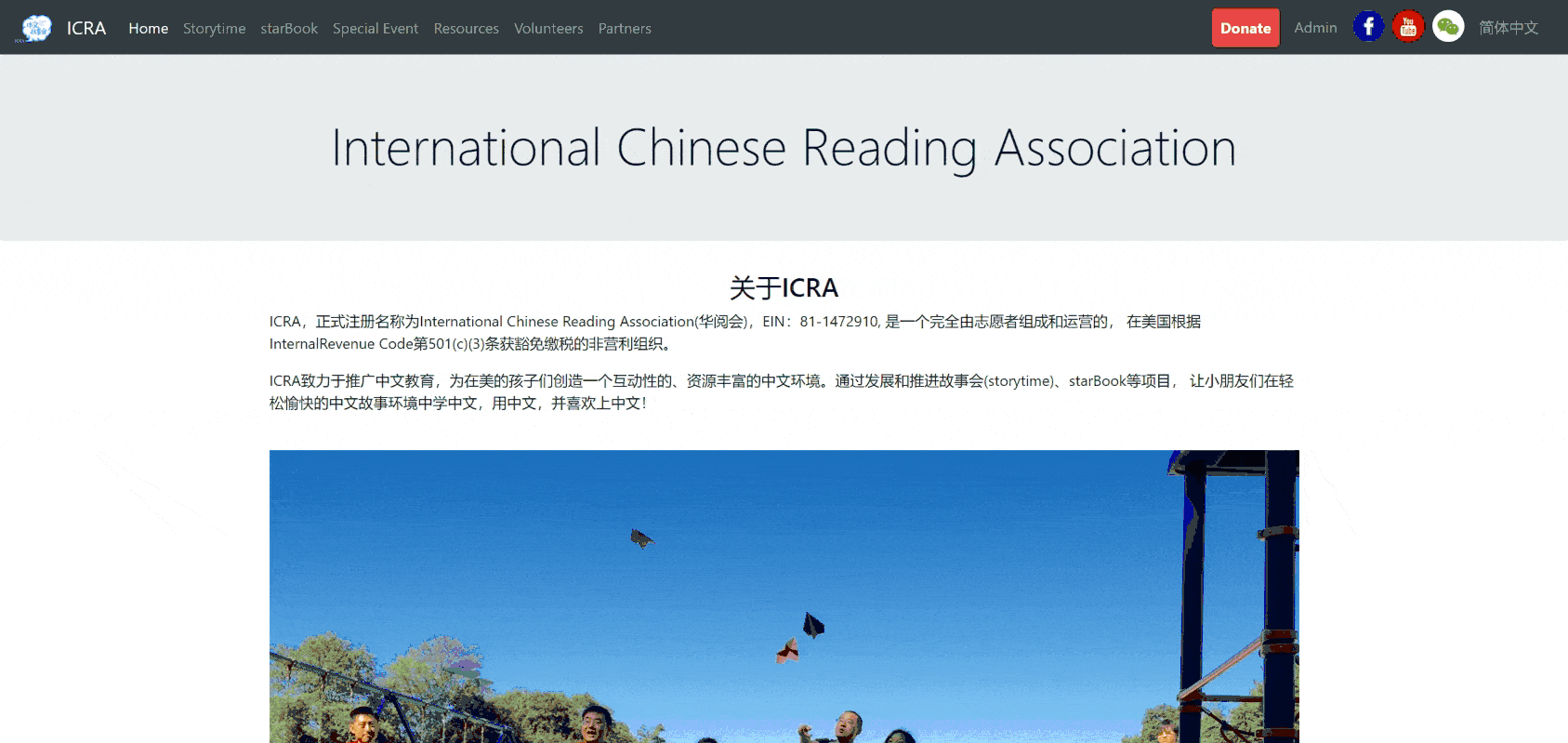
Loading ...

Loading ...
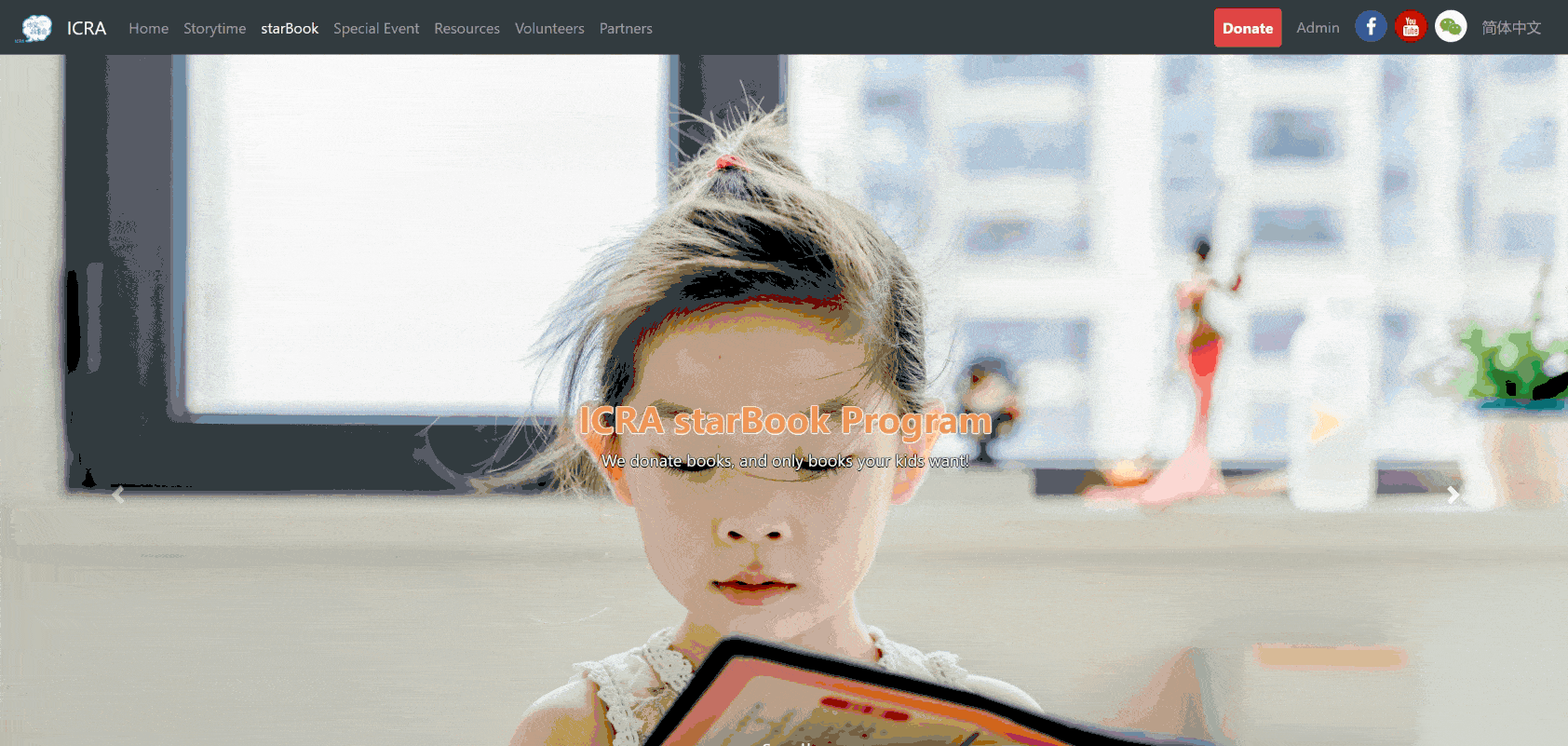
Role: Full Stack Developer
Industry: Non-Profit Organization
Tech Tool: Python Django
Project Length: 2-month development & up to date maintenance
Client: International Chinese Reading Association (ICRA)
Besides carefully listening to my client, I worked with my client to envision the product from random ideas to a coherent application program with specific goals.
Main Challenges:
Strategy:
Deliverable: A project proposal details the project vision, project goal, implementation plan, potential risks, and communication plan.
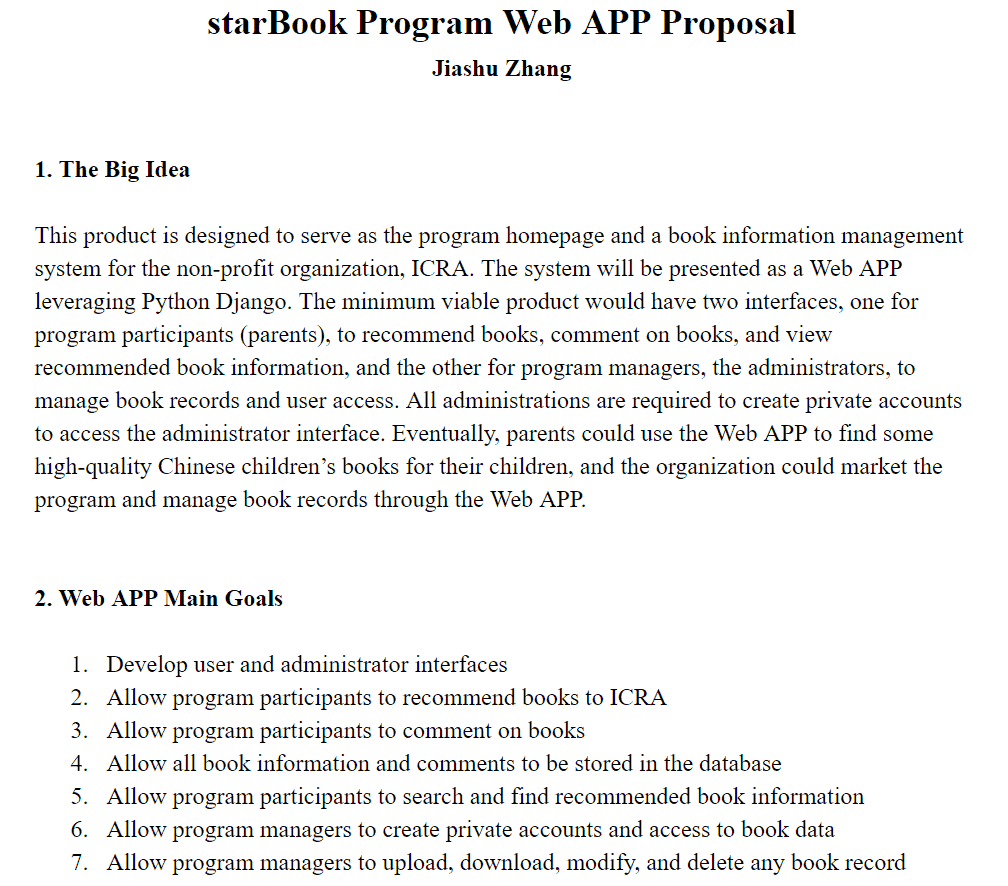
The Web APP is designed for two types of users, program participating parents and program managers. Two basic personas are created below.

Lucy, 35 years old, a mother of two kids whose ages are 3 and 5. She wants to borrow or buy some Chinese children’s books for her kids but does not know which libraries to go to or what books are recommended. She participates in the starBook program and wants to get some related book information on the program Web APP. At the same time, she could also recommend any book to the program and comment on existing books.

Tim, 28 years old, an ICRA volunteer for the starBook program. He needs to use the program Web APP to manage the book collection list. He has his administration account and can upload, download, modify, and delete any book record in the administration interface.
Deliverable: A flowchart maps the book recommendation or comment process.

To better visualize the Web APP and discuss the design with my client, I sketched main page wireframes and revised them during meetings.
Strategy: I sketched wireframes for my client to make instant changes during our conversations. Thus, we would not waste time making changes to fancy mockup tools.
Deliverable: Final sketch wireframes illustrate structures of the program home page and book collection page.
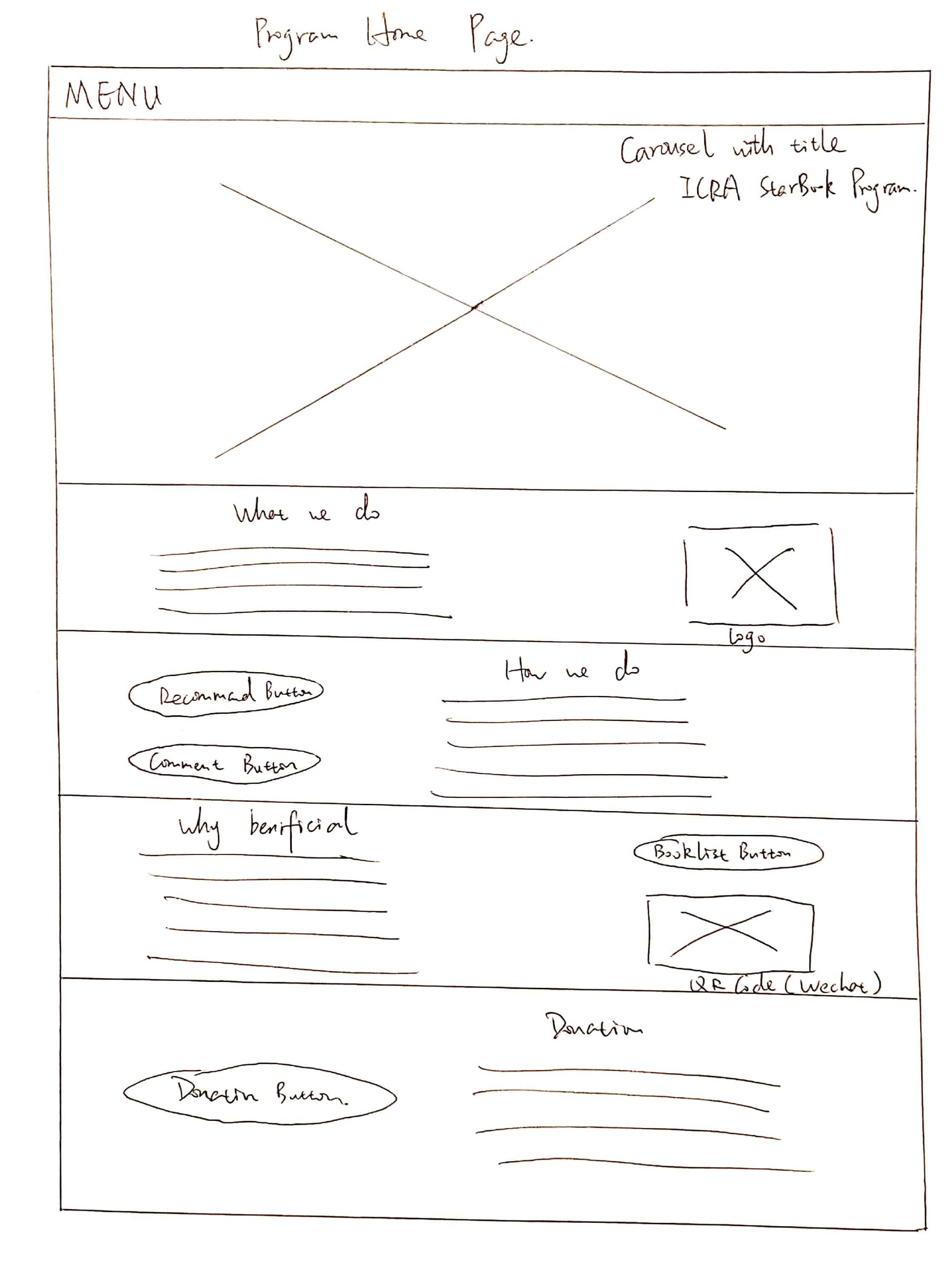
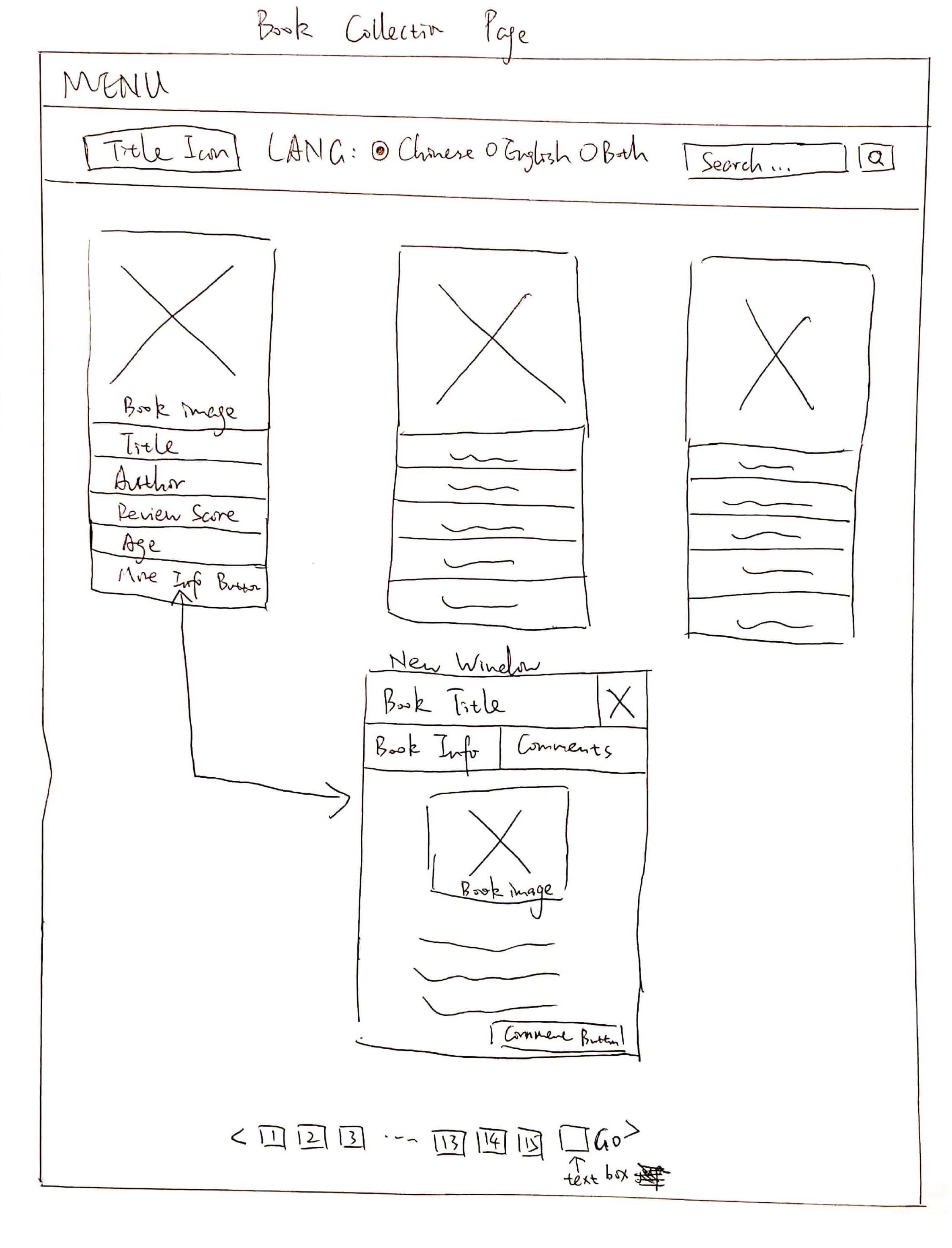
I applied the Agile methodology to better interact with my client and improve the project flexibility to changes.
Strategy:
Significant Improvement: Incorporated batch data import feature simplifies the data entry process for program managers.

Both internal testing and external feedback collection were implemented.
Internal Testing: The Web APP was firstly tested by program managers to test functionalities and fix bugs.
External Feedback Collection: The Web APP was then launched to collect user experience feedback from participating parents (public users).
Significant Improvement: Integrated Google Books API searches and auto-fills book information for parents, which reduces parents’ workload and encourages them to recommend books through Web APP.
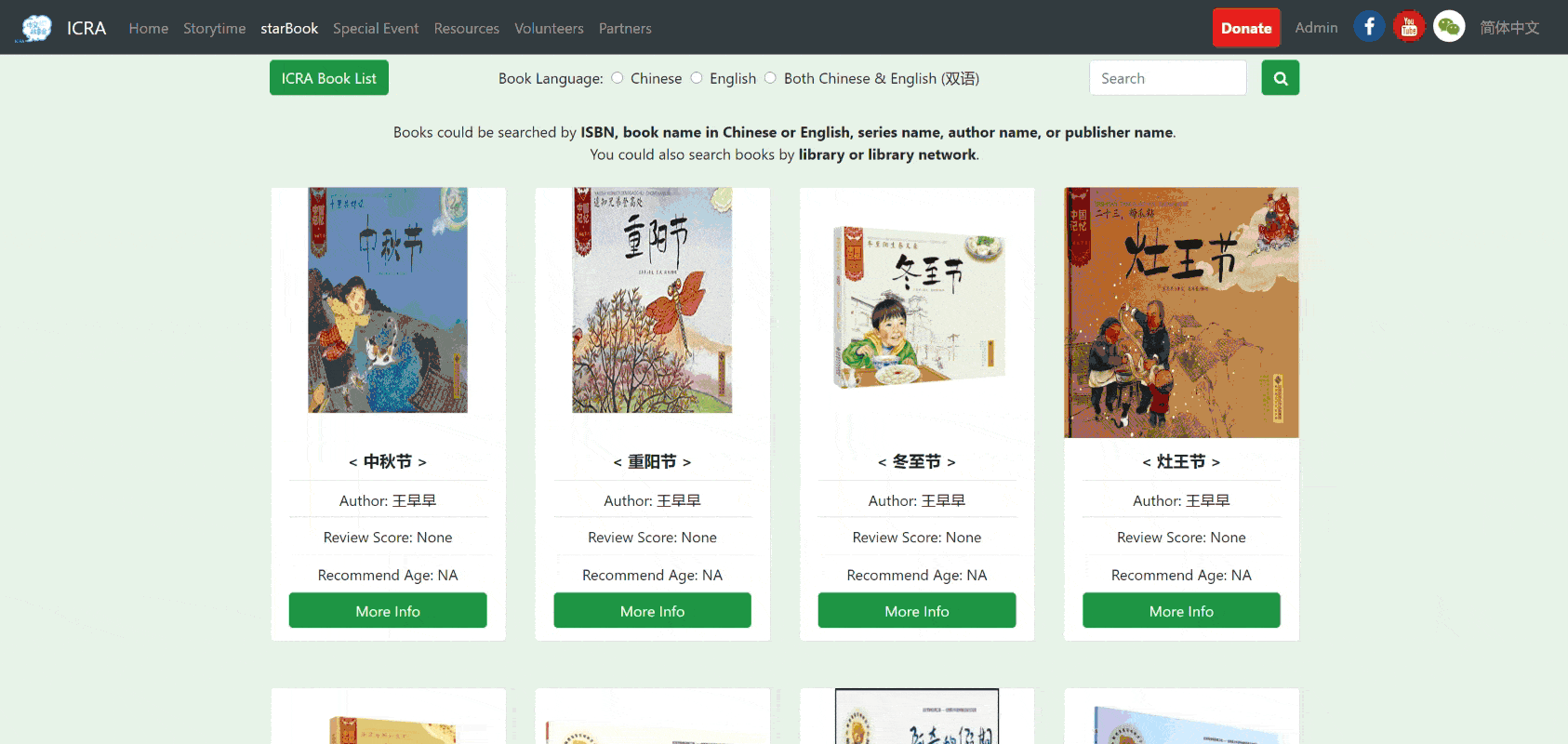
As more feedback is collected, maintenance is scheduled every two months.
Thanks to the positive reaction from users, my client decided to expand the Web APP to be its organization website. I will be responsible for designing more features to continue providing valuable information to the target audience.
